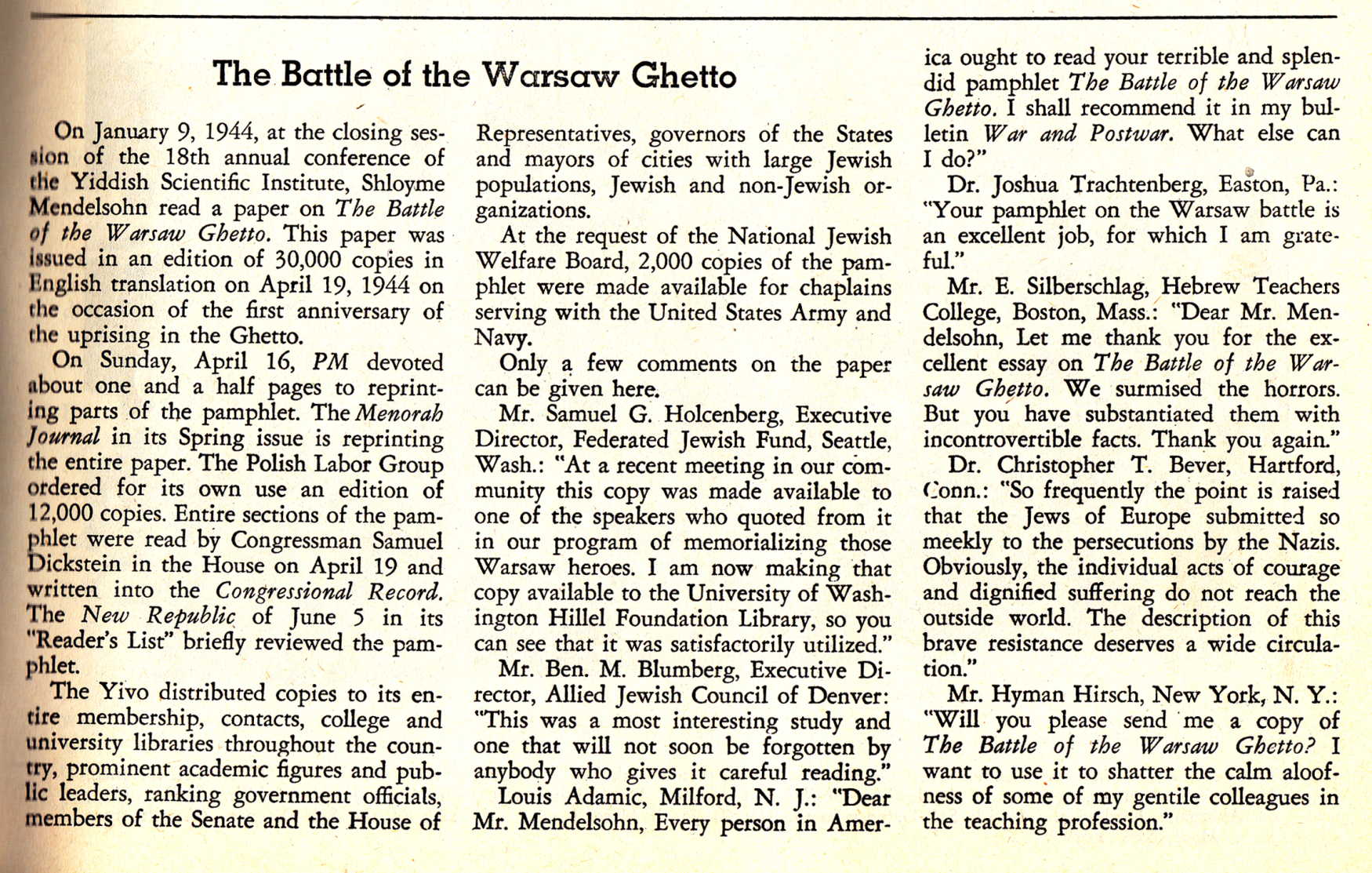From the Pages of Yedies
by ROBERTA NEWMAN
In 1939, Vilna was captured by the USSR and then transferred to Lithuanian rule. YIVO continued to operate under a supervisor appointed by the Soviets. In the summer of 1940, control of the city passed to the Soviet Union and, soon thereafter, YIVO was renamed the Institute of Jewish Culture and was absorbed into the Academy of Sciences of the Soviet Socialist Republic of Lithuania. In June 1941, Vilna was captured by the German army. YIVO was closed down and its collections were plundered.
By that time, the New York branch of YIVO had assumed what many hoped would be a temporary role as YIVO’s headquarters. YIVO’s director Max Weinreich, who had been in Copenhagen en route to a linguistics conference when the war began, had made his way to the U.S. and he, together with other colleagues who had managed to escape, as well as scholars and activists in New York, worked to reestablish as many of the institute’s projects and activities as possible. In 1942, YIVO moved to its own building on West 123rd Street in Manhattan.

When this third American issue of Yedies was published in 1944, it was becoming all too clear that YIVO’s relocation to the United States would be permanent. The Vilna Ghetto had been liquidated by the Nazis in September 1943 and its remaining inhabitants deported to labor and death camps. YIVO lay in ruins with its archival and library collections destroyed, confiscated, or dispersed to hiding places.
YIVO was among the first organizations in America to publish information about the Holocaust as it was unfolding, and among the first anywhere to report on armed Jewish resistance. The front page of the July 3, 1944 edition of Yedies highlights the publication of a brochure on the Warsaw ghetto uprising, which had taken place only a little over a year earlier.
